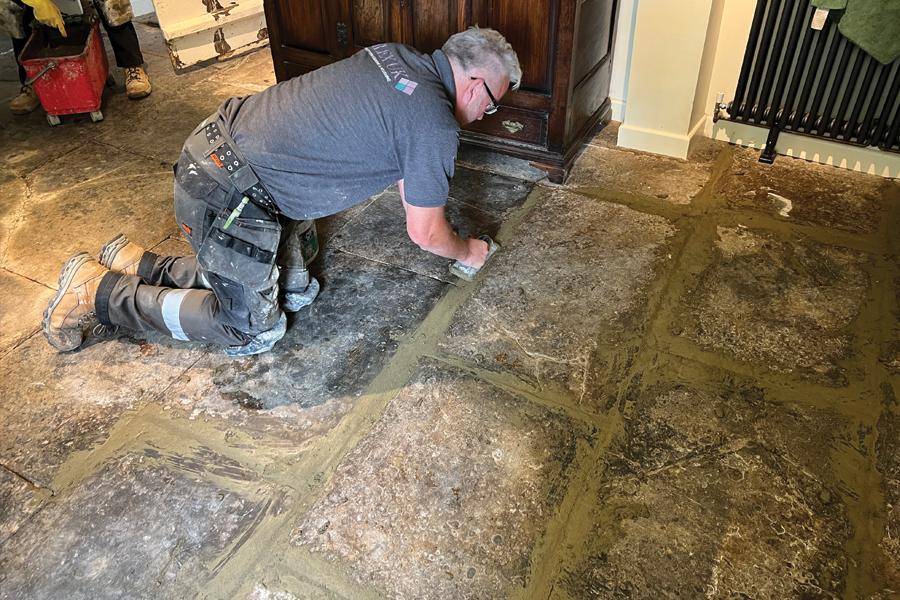Original flagstones are a beautiful feature in a period property – but renovation can be challenging. In many cases, stones are laid directly onto the ground, with no damp-proof membrane underneath.
This installation method allows the stone to breathe, and to absorb and evaporate moisture freely through the stone’s porosity. For a successful renovation, it’s essential this isn’t compromised, and that the correct treatments and methods are adapted to ensure that the stone isn’t damaged in any way. In a recent project involving LTP, stone maintenance specialist Silex UK visits a Blue Lias project and discusses the renovation carried out there.
Blue Lias limestone dates back to the late Triassic and early Jurassic period, some 195-200 million years ago. It’s named after quarrymen’s dialect for layers – “lias”. The stone is made up of layers of limestone and shale, and has a distinct blue/grey tinge due to its fossils, ores and iron content. It’s mainly found in Somerset and Dorset.
Phase I: cleaning
Located within a Grade II listed property in Sparkford, the Blue Lias limestone was laid throughout an area totalling around 100sqm. This area included the side entrance, kitchen and a narrow corridor leading into the main open hall area, including the dining area and lounge.
LTP advised the Silex UK team on the appropriate cleaning and protection method, in view of the stone’s age and environment. Being a historic installation, the floor was laid directly onto the earth, without a damp-proof membrane.
Before the floor was cleaned, Alastair Niddrie from Silex carefully removed salt, flaky residue and paint deposits by hand. LTP Grimex, an intensive cleaner designed to remove oil, grease, ingrained dirt, water-based paint and old layers of wax, was then used to clean the limestone and remove greasy residue. Niddrie used a 1:3 dilution, applying the cleaner to the flagstones with a broad brush. The treatment was left to react for 5-10 minutes, during which time the floor was kept wet with additional solution. It was then agitated with a brush, residue was removed and the surface was rinsed thoroughly with clean water.
Phase II: protection
Flagstone floors are often enhanced and protected using wax-based treatments. This method cannot be used on a floor without a damp-proof membrane, as it blocks the stone’s porosity and the passage of moisture and salts through the limestone. If the stone isn’t able to breathe, it will eventually break up. Walls can also be compromised, as moisture looks for other ways to escape.
At the property, Silex used LTP’s Ecoprotec colour enhancing stone sealer. A water-based impregnating treatment, the sealer is formulated to enhance and protect, repelling water, oil and grease. It was applied after the intensive cleaning and before re-pointing. A further coat was applied 24 hours after the stone had been cleaned up to remove any residual grout. The final coat covered the re-pointed joints as well.
The product is non-film forming, which allows the surface to breathe and helps to reduce efflorescence. The sealer is applied following a thorough clean and after the floor has been left to dry for 24 hours. To ensure a good application into the uneven surface, Niddrie applied the treatment with broad paint brush. Once cured, the floors were buffed using a rotary machine fitted with white pads; giving the surface a beautiful lustre. The flagstones were then polished by hand with woollen pads.
01823 666213
[email protected]
[email protected]









